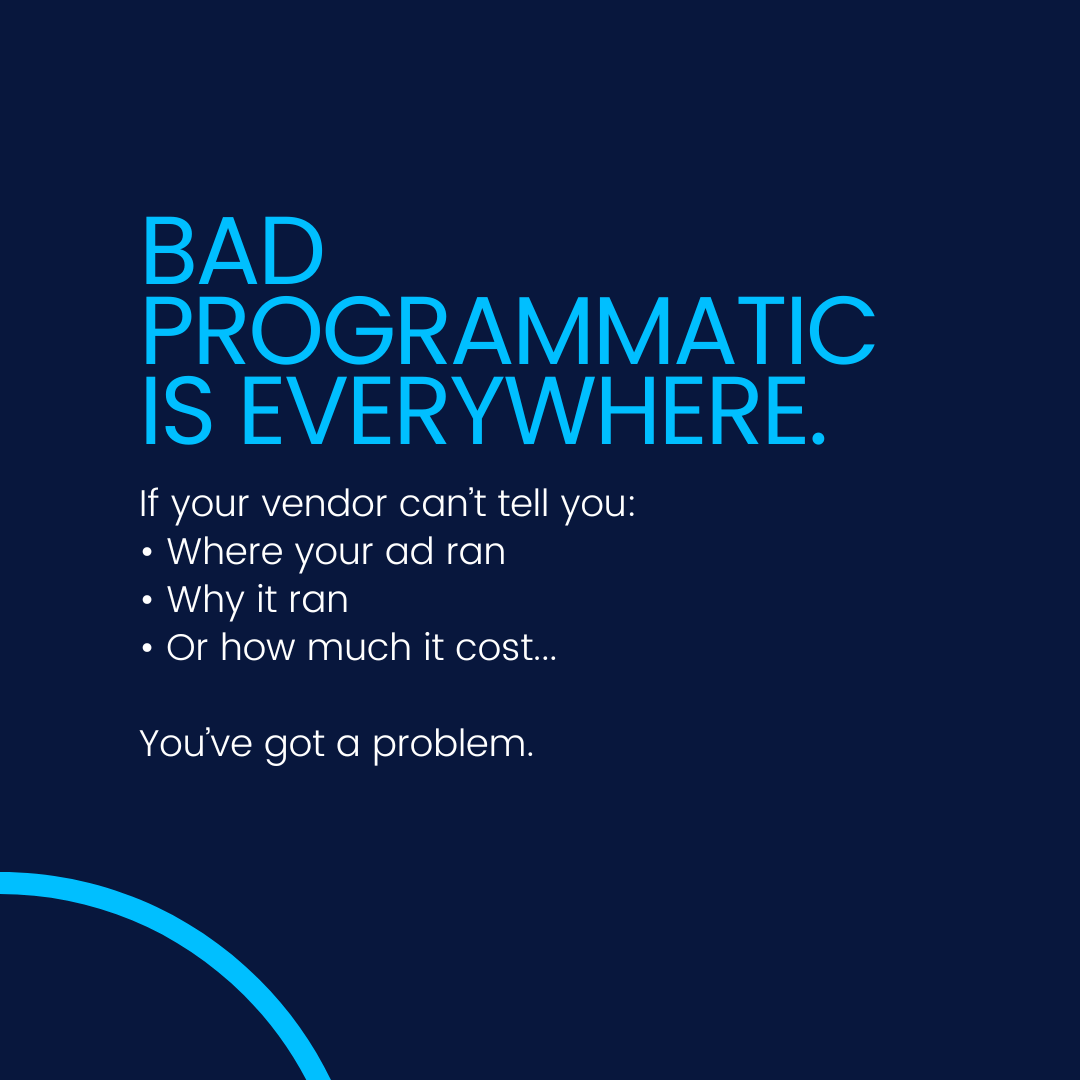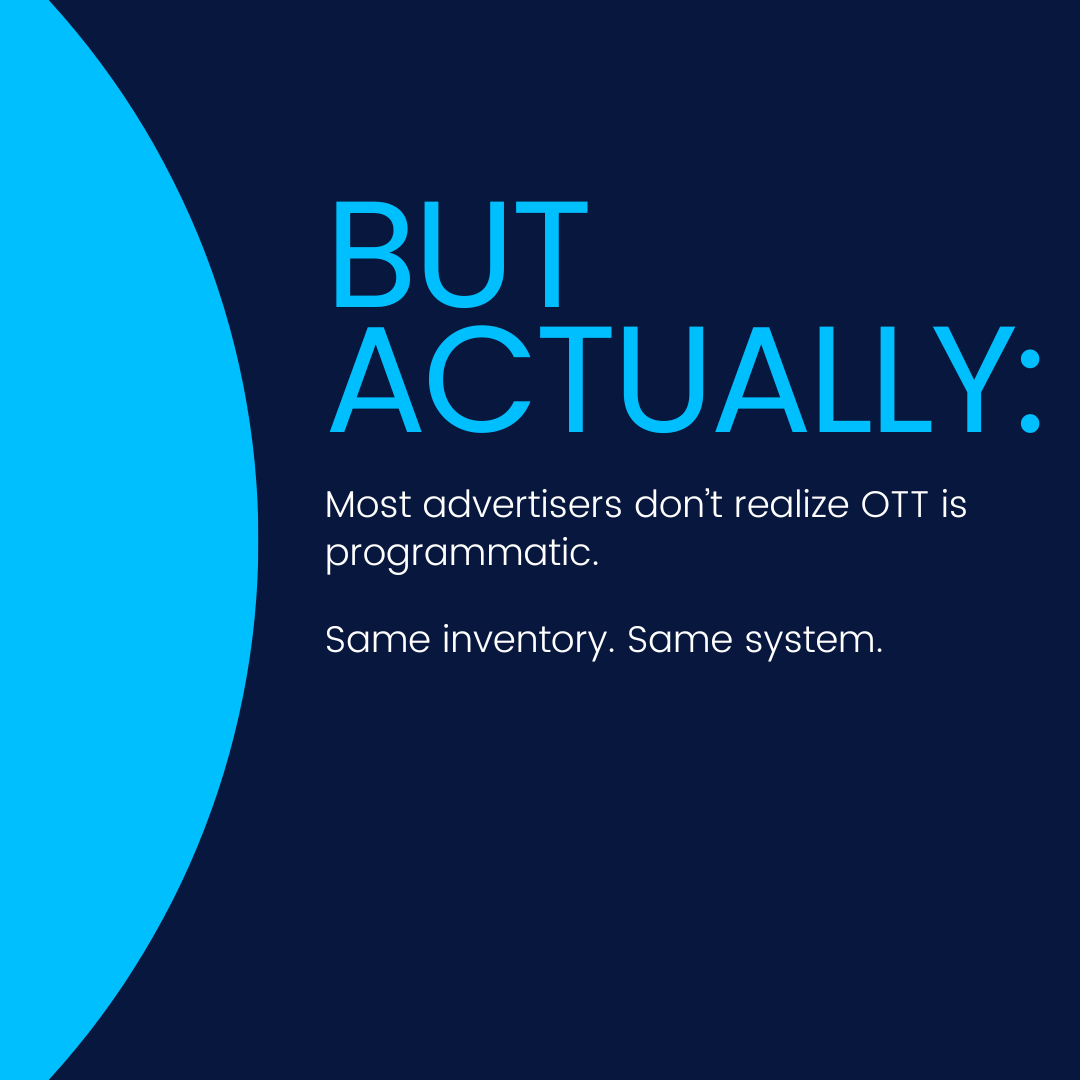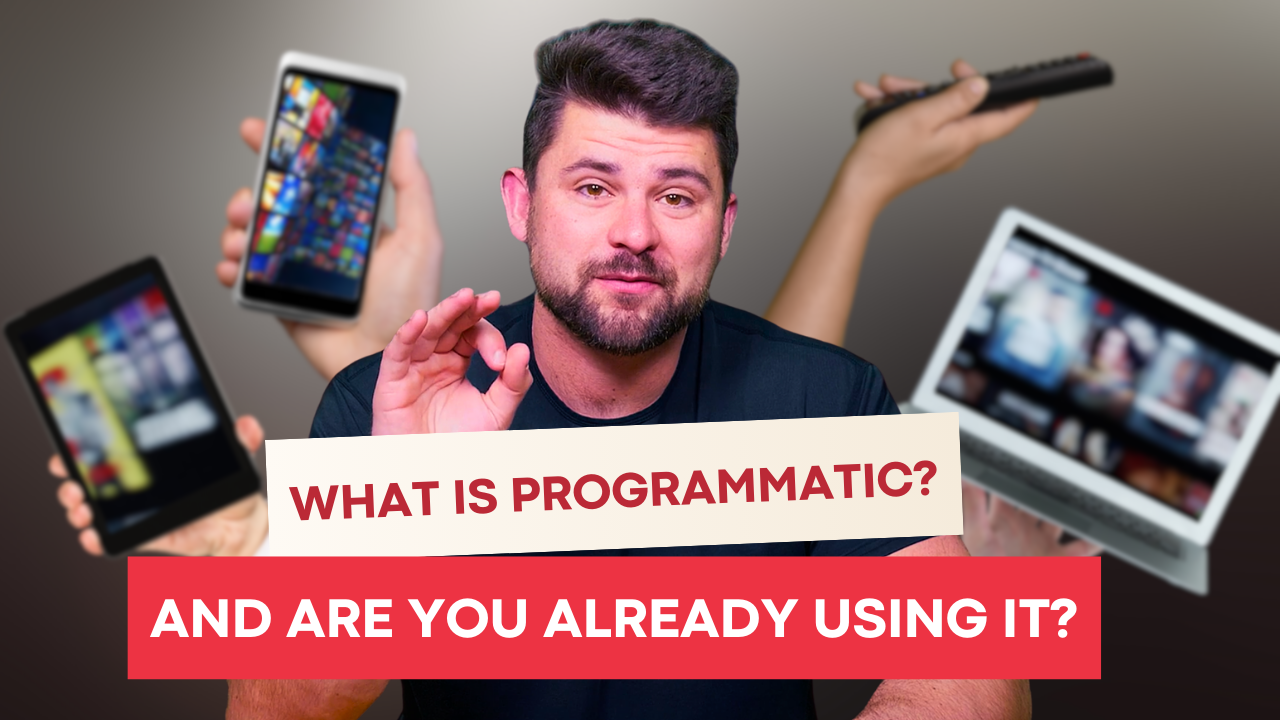Programmatic advertising. Two words that sound more like a data science thesis than a CTV strategy. And let’s be honest, most marketers treat it like kale: good in theory, but confusing, overhyped, and often misused.
But here’s the truth: programmatic isn’t the problem.
Bad programmatic is.
And if your vendor can’t explain how your dollars are being spent, where your ads ran, or even what programmatic is, that’s not a strategy. That’s a red flag.

Programmatic = How OTT Ads Actually Work
There’s this weird myth that OTT and programmatic are two totally different worlds. Spoiler: they’re not. At all.
Programmatic is just how most OTT ads are bought and sold. It’s the real-time, dynamic exchange of ad slots. Like a stock market, but for streaming eyeballs. You bid, you win, your ad runs. All in milliseconds.
So when someone tells you, “We don’t do programmatic, we just run OTT,” they’re either misinformed or deliberately dodging the truth.

The Real Problem? The Black Box.
Programmatic done right can be a performance powerhouse. But done wrong? It’s like setting fire to your budget.
Here’s what you should actually avoid:
-
Vendors who can’t trace your spend
-
Flashy dashboards with zero actionable insights
-
Auto-optimized campaigns with vague “AI” logic no one can explain
-
Providers who can’t define “programmatic” without breaking into a cold sweat
If you’re seeing those red flags, it’s not the tech failing you. It’s the people using it.
Here’s How It Really Works (in Plain English)

Let’s break this down:
Someone hits play on a show. The app calls out, “Ad break incoming. Who wants in?”
Buyers evaluate. Right app? Right geo? Right target?
They bid. One wins. Ad delivered. Done.
It’s fast. It’s targeted. It can be incredibly effective if you know what you’re doing.
And here’s the thing—programmatic isn’t new.
At its core, this model has been around since the early 2000s.
Google AdWords (yep, that AdWords) was programmatic before programmatic was a buzzword.
It ran real-time auctions where advertisers bid to appear in search results. Same principle. Different platform.
So no, programmatic isn’t some mysterious, sketchy new trend. It’s the backbone of how digital advertising has worked for decades.
Don’t Fear Programmatic. Fear the Lack of Clarity.
If your provider can’t tell you:
-
Where your ad ran
-
When it ran
-
Why it ran there
That’s a dealbreaker. You deserve better.
At adduro, we don’t just explain it. We show you. Transparent reports. Clear metrics. Actual strategy. No jargon. No filler. Just smarter CTV ads that perform.
Because the word “programmatic” shouldn’t scare you. But your vendor’s silence should.
The Bottom Line
Programmatic is not the enemy. The real threat is letting someone else run your campaigns without accountability or clarity.
So don’t avoid programmatic. Avoid the BS.
Want smarter, clearer, high-performing CTV?
You know where to find us.

